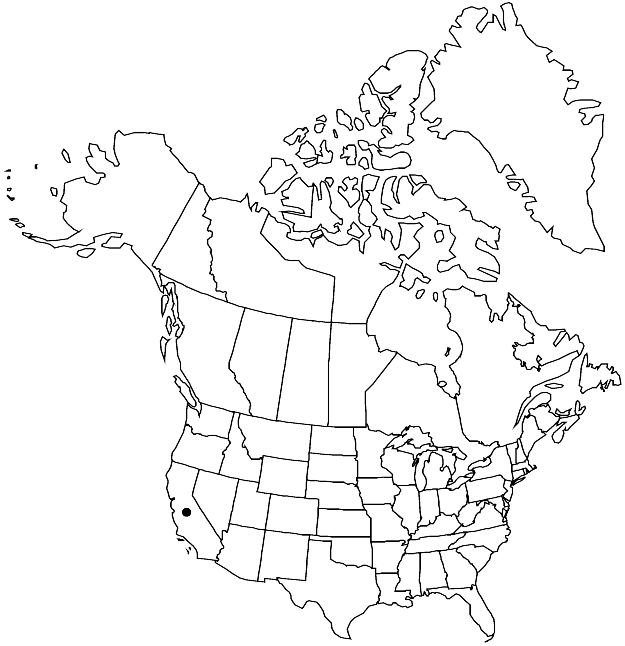Streptanthus breweri
Proc. Calif. Acad. Sci. 3: 101. 1864.
Annuals; (glaucous), usually glabrous, (sometimes sepals pubescent). Stems unbranched or branched basally, (0.5–)1.5–6.5(–8) dm. Basal leaves (soon withered); not rosulate; shortly petiolate; blade broadly ovate to obovate, 1.5–4 cm, margins entire or coarsely dentate. Cauline leaves: blade ovate or (distally) narrowly lanceolate, 1.5–10 cm × 3–45 mm, (much smaller distally), base amplexicaul, margins entire. Racemes ebracteate, (sometimes secund, rachis straight). Fruiting pedicels divaricate-ascending to suberect, 1.5–5(–6) mm. Flowers: calyx urceolate; sepals (erect), purple or white, (ovate), 5–7 mm, keeled, (ribbed, apex recurved); petals (recurved), white (with purple veins or adaxial pair white), 8–12 mm, blade 2–5 × 1–2 mm, margins not crisped, claw 5–7 mm, about as wide as blade; stamens in 3 unequal pairs; filaments: abaxial pair (connate proximally), 5–6 mm, lateral pair 3–4 mm, adaxial pair (connate, recurved or not), 7–10 mm; anthers: abaxial and lateral pairs fertile, 2–3 mm, adaxial pair sterile, 0.6–1.3 mm; gynophore 0.2–0.5 mm. Fruits erect to ascending or recurved, usually strongly arcuate, rarely straight, slightly flattened, 3–9 cm × 1–1.5 mm; valves each with obscure midvein; replum straight; ovules 24–54 per ovary; style 0.2–0.5 mm; stigma entire. Seeds broadly oblong, 1–1.5 × 0.7–1 mm; wing (0–)0.1 mm wide distally. 2n = 28.
Phenology: Flowering May–Jul.
Habitat: Serpentine barrens in chaparral, oak and pine woodlands
Elevation: 300-2100 m
Discussion
Streptanthus breweri is known from Alameda, Colusa, Fresno, Glenn, Lake, Mendocino, Napa, San Benito, Santa Clara, Stanislaus, Tehama, and Trinity counties in the North Coast and South Coast ranges. It is variable in fruit length and curvature, orientation of fruiting pedicels, and presence versus absence of sepal trichomes and seed wing. The type collection has straight fruits, glabrous sepals, and wingless seeds. Without further detailed studies, it is impractical to recognize infraspecific taxa.
Selected References
None.
